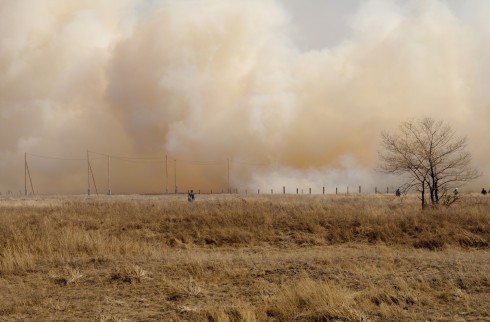The Joys of Research
The Enthusiasm of Discovery

Every book is a quotation; and every house is a quotation out of all forests, and mines, and stone quarries; and every man is a quotation from all his ancestors. – Ralph Waldo Emerson.
Every family tree has a root, a home, a person a starting point. From this starting point, the tree fans out with all its branches back into time. Does it not follow “inevitably that every father had a father, and so on. In fact,” said Michael Shaara in Man of Distinction, “when you considered the matter rightly, everyone alive was the direct descendant of untold numbers of fathers, down through the ages, all descending, one after another, father to son. And so backward, unquestionably, into the unrecognizable and perhaps simian fathers of the past.”
“It will not require much space to indicate the main sources of information in genealogical research. Having decided to trace back our own lines, we naturally turn first to the living members of our family. If we have parents living and accessible,—grandparents, great-grandparents, aunts, uncles, great-aunts, cousins, or others who are likely to know more about the family than we do,—let us consult them, personally if we may, by letter if we must,” begins Frank Allaban when introducing “Concerning Genealogy” and ancestral hunting.
“Special attention is also called to the radically different plans for genealogical works, one tracing the many descendants of a common ancestor, the other tracing the many ancestors of a common descendant. There is a general drift toward the latter, many having discovered the fascination of exploring their direct lines of descent.”
“The moment of first hearing the facts, when the joy of discovery and the satisfaction of making progress are upon us, is the psychological moment for making our notes. It is a positive delight while the fever of enthusiasm is high. As our informant begins his story, let us interrupt with the cry of the enthusiast, “I must jot that down!” Out comes our notebook, conveying to our friend a very distinct impression of the importance of being accurate. He collects himself, and proceeds to give his facts and traditions with the greatest care. As we stop him with questions, or take time to write the facts, his memory is stimulated. With skillful questions the genealogical worker can draw out all the information, taking care to cover every point which may come up later.”
“Furthermore, while we may be able to find our way back from generation to generation with almost ridiculous ease in some cases, such luck is usually too good to last. It is a rare vein which yields family connections at every stroke of the genealogical spade, and one such line may have to console us for a number which we mine slowly and painfully, and for some others which yield no results whatever beyond a certain point.”
“We will suppose that at last the task of investigation has come to an end. We have run our family lines back as far as our plan contemplated, or as far as we were able to do with a reasonable amount of research. Perhaps most of them go back to the original emigrants, but it may be that in a case or two we have had the good fortune to make connection with an old family stem in Europe. In any case, the work is now done. We have made our discoveries, and scored triumphs not a few. But though the excitement of the chase is over, its pleasures are by no means spent. Is there no story to tell, no tale of our difficulties and exploits? Next to the exhilaration of the hunt itself, what can compare with the mellow joy of going over it with a comrade! Least of all can the “inevitable narrative” be spared in a case of ancestry-hunting. It is the logical issue of the search, and failure to weave our facts into a readable story, after having collected them, is almost unthinkable,”
“A truly interesting genealogical work is not a dry compilation of family statistics, but contains striking biographical pen pictures. Let these be made as complete as possible, and the story told with all the interest we can throw into it. We believe that the ideal genealogy is yet to be written, and that it will present facts with the accuracy of a Bancroft, but clothe them with the charm of an Irving. What possibilities there are” are these not the Joys of Research as expounded by Frank Allaban
However to set down the story for future generations the work must contain the proofs of the statements made. An imperative sorting in any historical biography contained in the family tree must need quote the authorities and provide systematic footnotes, and also citations of authorities in the text. The result is that there is no guess as to the opinion or motivation of compiler in giving us the fruit of original research, it is quite well established whether the biography, then, is an extract from another compilation, a part of oral tradition, or a mere conjecture put forward by the collective family memory.
Every leaf in the family tree begins with a name, it is with this moniker that the individual is thus introduced and thus their legend also starts. What whisper, what expression, what libretto will the name reveal? The name is thus a beginning of who they are, like the title of a new adventure story. The family historian has a bird’s eye view from his vantage point in the future to see why this ancestor existed. What role this ancestor played in the family, within the community by their words and by their deeds. The genealogist presenting the family tree to the world at a family reunion or compiled book is tasked with a considerable and significant responsibility. Like the title of a book, the narrative behind the name of each ancestor within the family tree is dependent upon the account and testimony of the genealogist and the validity of the sources relied upon.
We inherit from our ancestors gifts so often taken for granted. Each of us contains within this inheritance of soul. We are links between the ages, containing past and present expectations, sacred memories and future promise. – Edward Sellner
Note The new provincial Saskatchewan Region Gen Web is online at https://saskgenweb.site123.me the original Saskatchewan Region Gen Web site is under maintenance by Ancestry/Rootsweb.com. Check periodically for progress on the historical site http://www.rootsweb.ancestry.com/~cansk in the meanwhile please check out https://saskgenweb.site123.me/
















